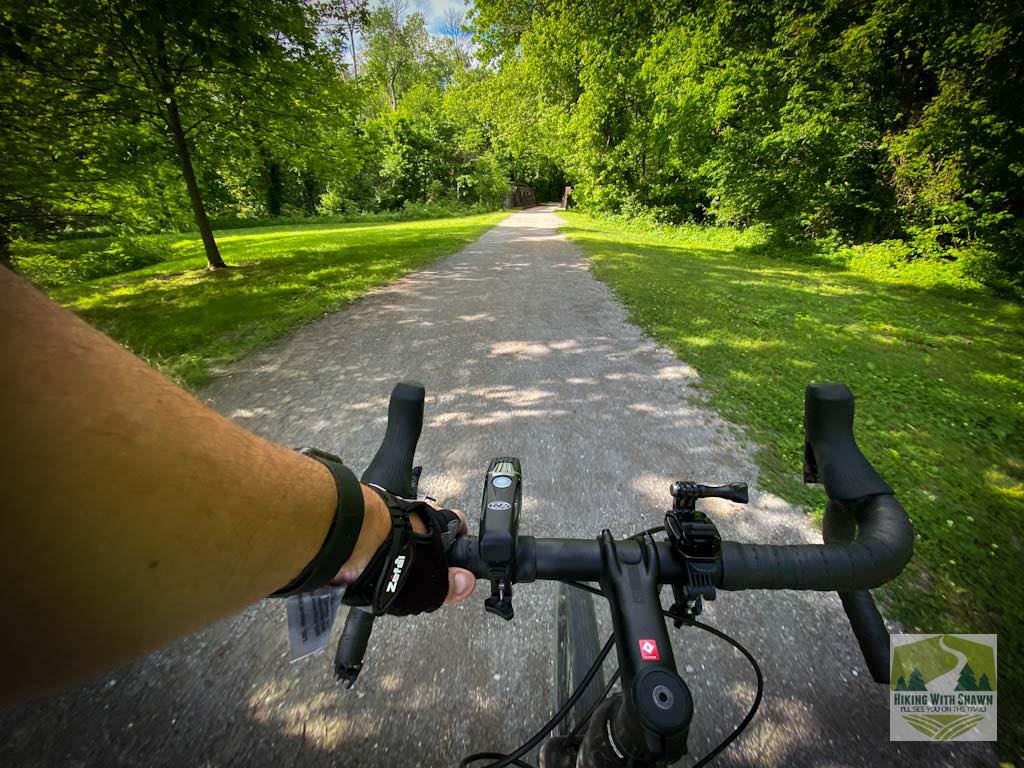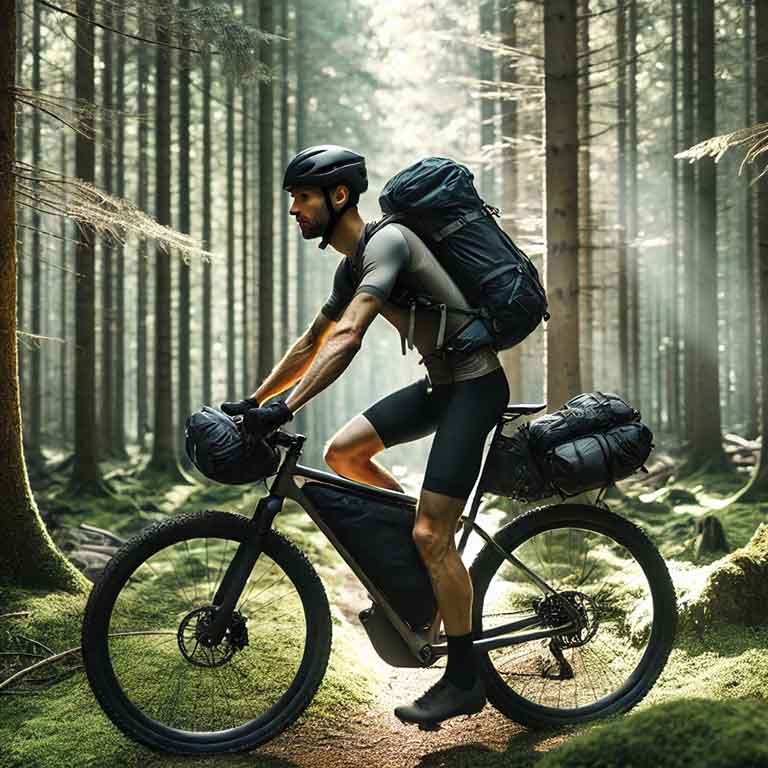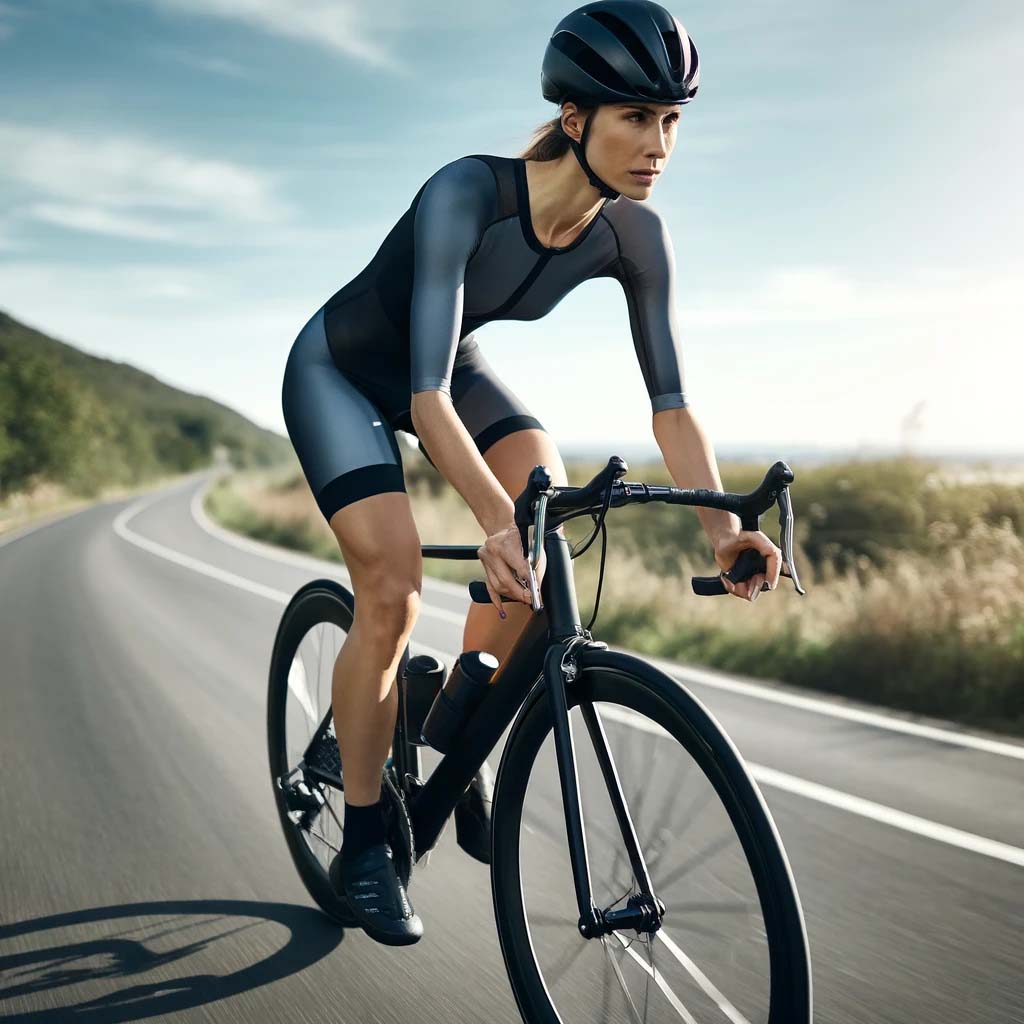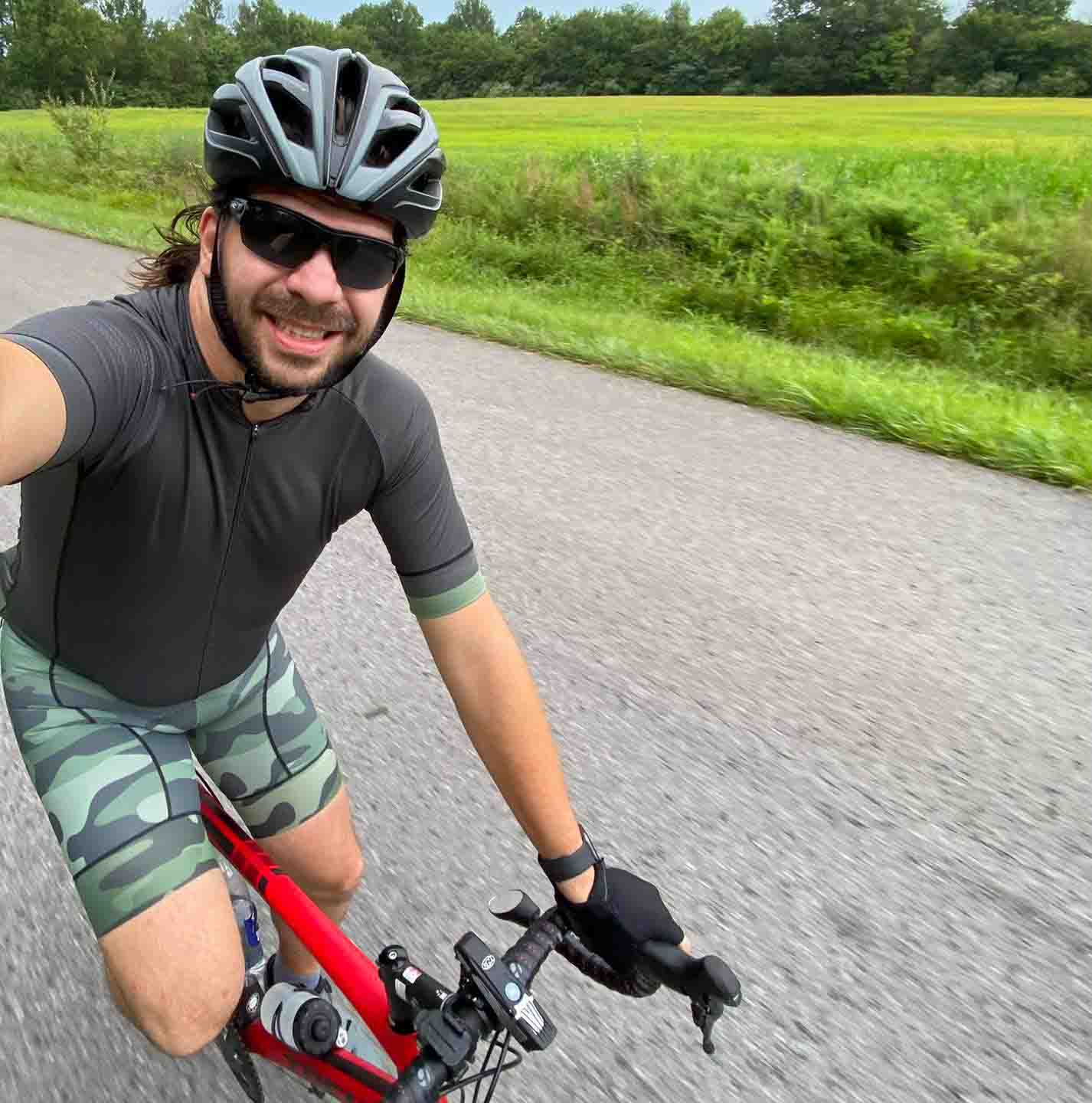How to Start Gravel Biking (An Ultimate Guide to Gravel Cycling)
Have you considered gravel biking?
It’s an awesome form of cycling, and its popularity is really growing, too! It’s like a mix between road and mountain biking. It’s adventurous, and it’s definitely different from the rest of the cycling disciplines.
In this guide, I’ll show you everything you need to know about gravel biking and how to start today.
What is Gravel Biking?
Think of gravel biking as a balance between road and mountain biking.
You ride a road-styled bicycle with drop bars and all bells and whistles. However, your tires are more like what you’d find on a mountain bike. So, you could ride the road if you wanted to, but you can also ride off-road, too.
Gravel bikes are the ultimate all-terrain machines, capable of conquering any surface. They’re not just for paved roads, but also for gravel, dirt, sand, and even technical single-track trails if you have the right tires. Their versatility opens up a world of adventure, making them the perfect choice for those who love both road and off-road riding.
Most people get into gravel biking because of the adventurous aspects of it.
Gravel biking is not just for the pros, it’s for everyone who loves the thrill of adventure. You can take your gravel bike anywhere-from camping trips to races and ride events. With the growing popularity of gravel racing, there’s a vibrant community waiting to welcome you. If you’re a fan of both road and off-road riding, gravel cycling is your perfect match.
I use my gravel bike to ride my local rail trail all the time. It’s made of crushed limestone and gravel, and my bike performs perfectly on it, whether it’s wet or dry.
While what we know as gravel biking today is relatively new, it’s not really that new in general.
Gravel biking may have been inspired by cyclocross racing, which uses road bikes to race around dirt and obstacle courses. The first roads were never paved, and bicycles were used on them for years. Mountain biking has also been around for ages.
Gravel isn’t really a new thing but it’s definitely picking up a lot of popularity over the past few years.
Choose the Right Gravel Bike
There are many different gravel bikes to choose from. There are many different brands. The best brand of gravel bike is the bike that you feel the most comfortable on. You should check out your local bike shop and see what they carry first. Supporting locals is important.
Some of the best gravel bike brands include Trek, Specialized, Cannondale, Giant, and others. There are also gravel e-bikes if you’re looking for something electric. Gravel bikes can be expensive. You might look at the used option if you know your size. I will say that cheaper brand gravel bikes are often ones that won’t last very long. I would get one from a reputable brand with great reviews.
Gravel bikes come in many different types of frames and component construction. Many gravel cyclists like carbon fiber frames because they’re extremely lightweight and reduce shock. However, aluminum frames are heavier but can typically hold more weight, which is ideal if you want to do a lot of bikepacking.
The most important thing is the bike fit. This is why it’s recommended to check out bikes from your local bike shop. They’ll fit you for the right bike size. The wrong size can lead to injury and discomfort. There is no one-size-fits-all bike size.
Gravel bikes come in different tire sizes and tire capacities. Some gravel bikes might allow for a certain tire size, while others might allow for larger tire sizes. This all really depends on what you want to use your bike for. This is another good reason to go to a local bike shop and ask about these concerns.
There are many different types of components and features to consider with gravel biking as well. You might want to get a tubeless setup. You might want to choose a bike with electronic shifting. There are different brake setups, such as disc brakes.
A local bike shop can answer all these questions and find you the best bike for gravel biking.
Find Gravel Biking Routes
It’s easy to plan a gravel bike route. You just need to find gravel roads, forest service roads, designated bike trails, rail trails, and other off-road areas and plan a route through them.
Make sure you choose roads you can legally bike on. Some forest roads, for example, will be closed to traffic on certain dates. Any road a truck or jeep can be on means a bike can be on those roads as well. A bicycle is a legal vehicle. Some roads, such as old roads through wilderness areas, may also be for foot traffic only.
Use apps and map services to help you plan your gravel biking route. Gravel Map is a good service to use to find gravel roads in your area. You can also use apps such as Ride with GPS or Trail Forks to find gravel biking routes in your area. Sometimes, it’s good to drive the routes if you can and see how they’ll be for your bike.
There are many different terrains to consider adding to your bike route. Add paved roads, gravel roads, open Forest Service and BLM routes, mountain bike trails, rail trails, and other off-road areas where bicycles are allowed. Consider elevation and technical requirements. Consider creek crossings and other hazards you might encounter.
It’s also best not to stick to one route. Explore your area on an adventure and learn all the great routes.
Use the Right Gravel Biking Gear
You need to get a few bags to hold your basic gear. Get a little saddle bag that zips up and has a strap where you can connect a backlight. You can also get an additional bag to hold anything else. A handlebar bag or a top tube bar bag are often popular choices. Just get the size needed to hold what you need so you can reduce weight.
A headlight and rear light is needed. You want to get something that can charge up and is bright. Most gravel cyclists run their lights day and night for maximum safety.
Get a few water bottles and water bottle cages. They make all sorts of both. You can go for more expensive cages that are lighter in weight. Carry at least two bottles of hydration with you. You might need more on longer trips, though.
Get some basic bike tools: a spare tube (even if tubeless, just in case you need it), portable air pump or CO2 pump system, spoke tool, tire levers, patch kit, bike-specific multi-tool, and some zip ties just in case bags break or something like that.
You might need to get a few mounts for lights, cameras, bike computers, and phones.
Consider a bike computer to help track your activities and training stats. Most cyclists go for units made by Wahoo or Garmin. There are cheaper computers out there that are just as good, too. Get one based on your needs rather than what’s popular.
Make sure you get a bicycle-specific helmet. Protecting your head is critical to your safety. Make sure it fits, isn’t damaged, and can strap on to your head the way it is supposed to.
Get a few cycling kits. These include bib shorts or standard cycling shorts with padding, a cycling jersey, cycling socks, and cycling gloves. Colder-weather apparel such as thermal bib shorts, tights, a cycling jacket, and shoe covers is also a great investment. Get some cycling rain gear as well.
Consider clipless bike shoes and pedals. These are specialized shoes with cleats on them that snap into the pedal. This helps your cycling technique and is used by most riders.
When cycling, make sure you carry plenty of hydration and nutrition. Hydration and fuel are essential to your safety and health.
If you want to start bikepacking, look into bikepacking gear. If you are concerned about weight, you can even choose ultralight bikepacking.
Consider any extra gear or supplies you might need based on your needs when gravel biking.
Gravel Cycling Skills and Techniques
Riding on rough terrain is a technique you need to get used to. It’s best to start on easier routes and gradually go for more rugged terrain as you get used to it. Gravel biking is made for all sorts of ruggedness, but you still have to get used to riding on it all.
A lot of gravel riding involves getting off your bike and hiking it up hills, through extremely rugged conditions, and over obstacles like downed trees. Hiking as an additional activity is a good way to build strength and technique for this.
Try to find a way to relax when gravel biking. The more tense you are, the stiffer you will become, which could lead to injury.
Learn how to use your brakes properly. You should never ride your brakes unless it’s an emergency. Try to use both front and rear (easy braking) together to help slow you down more efficiently. Don’t hit your front brake too hard, or you might go over your handlebars.
Use your weight to maneuver your bike. If going uphill, shift your weight to the front, and if going downhill, shift your weight to the rear of your bike.
Be aware of everything around you. In the backcountry, there are more natural and wildlife hazards to be aware of.
Practice riding on hills to improve your hill climbing. Try to stay on your saddle and breathe through your nose and out your mouth. Take it slow and focus on getting to the top without having to stop. Gradually attack steeper and longer hills as you improve your technique.
Prepare yourself mentally for gravel biking. It’s a more rugged cycling experience, but if you do it right, it should be exciting and a rush.
Consider off-bike strength training and exercise. Lift weights, go trail running, do Yoga, go swimming and do cardio exercises to help you become stronger on the bike.
Focus on your cornering technique. Try not to brake in corners. Get used to slowing down before corners and speeding up before you get out of the corner or turn.
Practice makes perfect when improving your gravel biking skills and techniques.
Gravel Biking Tips
When you first start gravel biking, explore your area and nearby public land and routes. Make it an adventure and keep it fun while you improve your technique.
Get specialized bike shoes that snap into the pedals. They may be intimidating at first, but they will make cycling so much better once you get used to them.
Eat some nutrition and drink a few big swigs of water every half hour on your ride. It’s important to stay fueled and hydrated when gravel biking.
Gravel bikes are typically made to fit various tire sizes. Depending on the terrain you commonly ride on, you might need to change tires. Talk to your local bike shop to see what tires would be best and try different ones until you find your perfect fit.
Put safety before anything else when gravel biking.
Try to maintain your bike as much as possible. Get it checked out by a local bike shop on an annual basis. Make sure you change parts and components as needed. This will make your gravel bike last forever.
Get on Strava and track your performance and stats. Strava is great for helping you improve your cycling and for joining the cycling community. The premium version offers the best features, but the free plan is also useful.
Routinely clean your bike and gear. Keeping your bike and gear clean after every ride will make it last a lot longer.
You’ll learn more tips as you get more gravel biking experience, and sometimes those are the best tips to learn, the ones that you learn on your own.
Gravel Bike Racing
If you want to try gravel racing, make sure you choose a race based on what your goals are. If your goal is just to finish, you don’t need to do the toughest race in the country. Choose races based on your skill level and overall goals so that you can gradually get better and continue to enjoy gravel racing.
When deciding on a race, be sure to fully understand the terrain you’ll be racing on. Not all gravel biking races are just gravel roads. Some might have mixed terrain such as sand, mud, rocky single-track trails, and rugged conditions like that.
Try to plan a training routine. You should definitely train for upcoming bike races. The more you train for the terrain and route you’ll be racing, the better you will likely do. If you can train on the actual race route, try doing that.
Make sure you get plenty of rest the night before the race. Eat pasta or something similar to load up on carbs. Carbs are fuel for bike racers.
The next morning or morning of the race is about preparing. Eat a good breakfast that will be easy on the stomach like oatmeal and fruit. Use the restroom, and don’t drink too much coffee. Mentally prepare for what lies ahead.
And if you’re last, at least you finished. Train harder, and you’ll do better the next year.
Remember to Have Fun
Consider bikepacking as an additional adventure of gravel biking. This is when you go camping overnight in the backcountry by bike. Most people who do this use gravel bikes.
Always try to seek an adventure on your gravel bike. Go down forest service roads and logging roads, cruise back roads, and seek out an adventure. Enjoy what you get to see by bike.
Explore nature with your bike. On designated mountain biking trails where gravel bikes are appropriate, you can ride them and see the nature and ruggedness of the backcountry around you. Enjoy the fresh air you’ll be in while biking.
Try racing! Racing allows you to push yourself and see what you can do. Even if you don’t win, you can still compete against yourself each time.
Just try to keep having fun because that’s what gravel biking is all about.
Now, Over to You!
Now that you know what gravel biking is all about, it’s your turn to jump right in, get a gravel bike, and start enjoying these great adventures.
If you’ve enjoyed this article, please share it with others. Consider donating a one-time tip for this article.
Be sure to subscribe to the upcoming weekly cycling newsletter for more exclusive cycling content.
About Shawn Gossman
Shawn Gossman is the author of this post and founder of the Beginner Cycling Tips Blog.
Shawn has been an avid cyclist for around 12 years. He road, gravel, mountain, and trail bikes. He likes adventuring more than racing.





Trackbacks/Pingbacks